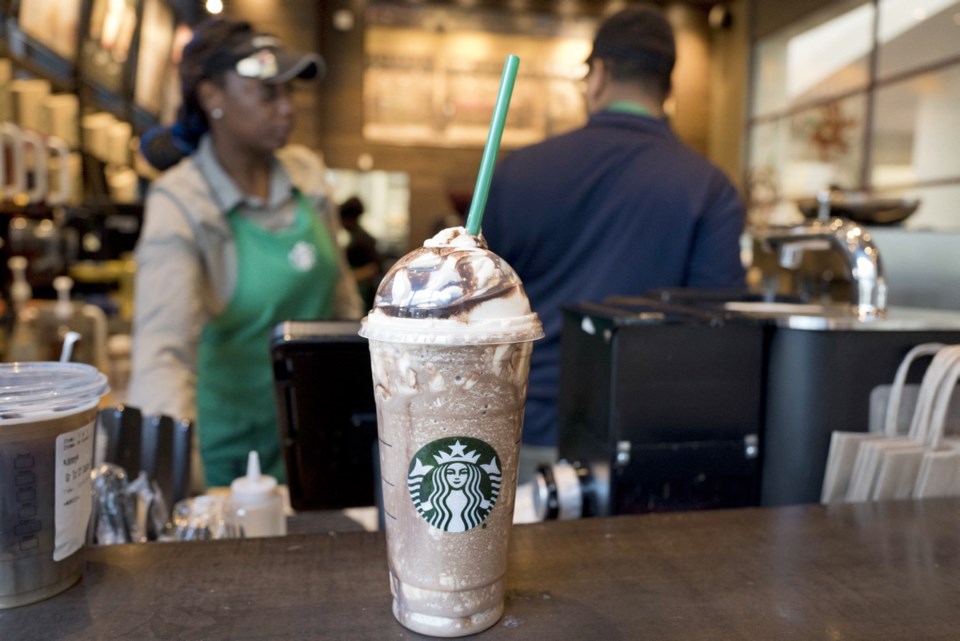Starbucks’ plan to reduce its carbon emissions is undoubtedly ambitious. It wants to halve its food waste, water use and gas emissions by 2030.
The baseline year will be 2018, based on an audit the company conducted. Starbucks’ commitment to becoming a better environmental steward has wide-ranging implications across the food industry. Other chains have made similar announcements.
McDonald’s aims to cut emissions by 36 per cent from 2015 levels by 2030. Yum Brands, which owns KFC and Taco Bell, seeks to reduce emissions by 10 per cent by the end of 2025. All these efforts have merit, but Starbucks’ call is different.
Starbucks is a massive global network of stores. There are more than 31,000 Starbucks locations in more than 80 countries.
Starbucks is responsible for emitting almost 17 million metric tons of greenhouse gases a year, using one billion cubic metres of water and dumping 868 metric kilotons of coffee cups and other waste.
Starbucks aims to become “resource positive” by storing more carbon than it releases, eliminating waste and providing more fresh water than it uses.
Everything coming out of a Starbucks store will be served in recyclable or compostable containers, from coffee to lunches to treats. These measures will help, but Starbucks’ plans won’t stop there.
The biggest surprise will come from what Starbucks will do to its menu and the products it sells.
Dairy, for all intents and purposes, is now on its way out at Starbucks. Dairy alternatives will be the standard in Starbucks stores. Whipped cream, cream, milk — all will be gone soon.
While dairy is typically cheaper, Starbucks believes this will change. Starbucks is banking on its buying power and the volume it represents to gain access to lower-priced alternative dairy products.
To entice dairy alternative providers to scale up, demand will need to be ramped up by other major players. The dairy industry will probably have some issues with Starbucks’ move away from dairy, but the science is compelling.
Based on a study published by Science in 2018, milk production requires more land, more water and will emit more carbon than any other alternatives to milk.
Given Starbucks’ clout, other chains could follow if dairy alternatives become more affordable, as Starbucks is predicting, to the peril of the dairy industry.
Under former CEO Howard Schultz, Starbucks prioritized using renewable energy, invested in climate-resistant coffee trees and gave discounts to customers who brought their own reusable mugs, long before the plastic crisis, which really started only a few years ago.
Kevin Johnson, Starbucks’ CEO since 2017, only invests in green bonds and options. The track record is there.
Also, Starbucks is known to sell products with higher price points than those of its competitors. Customers expect to pay more when visiting Starbucks.
That will give Starbucks an edge, and help the chain absorb some of the extra costs. Demand at Starbucks is typically more elastic.
In other words, Starbucks customers are not as price-sensitive as customers visiting other coffee shops. Tim Hortons makes a point of announcing price hikes on its menus every now and then. This doesn’t happen at Starbucks. Starbucks’ brand equity is second to none, and it charges for it, with no apologies.
Reaching these environmental goals won’t be easy for Starbucks. In fact, the chain’s stock price is down since the announcement.
Maple Leaf Foods committed to becoming a carbon-neutral company just a few weeks ago. With some responsible accounting, Maple Leaf Foods can get it done without significantly tweaking its operations.
Starbucks, on the other hand, opted to go even further and commit to changing how its operations affect the environment. Instead of looking at the arithmetic of climate change, the Seattle-based giant is changing everything it does, from how it procures ingredients, to menu design, to how stores are managed on a daily basis.
Starbucks’ bold move on sustainability points to the pressure the food-service industry is under to save the planet, so to speak.
For many consumers, especially the younger generations, politics have failed to provide an adequate response to the climate crisis. While governments face their electorates once every few years, food-service providers face customers every day. And customers are expecting industry to step up.
But accountability will be key for companies making bold commitments. Companies are known to fail the market on sustainability.
For example, Starbucks promised in 2008 that it would serve a quarter of its beverages in reusable containers by 2015. By 2016, only two per cent of all beverages were served in reusable containers.
The public won’t be as forgiving this time, and will not hesitate to consider any half-hearted gas emission-reducing initiatives as greenwashing.
Dr. Sylvain Charlebois is a professor in food distribution and policy at Dalhousie University.



